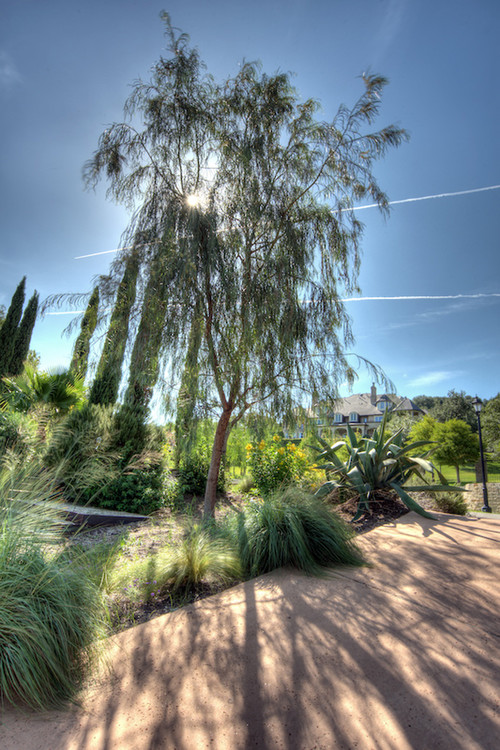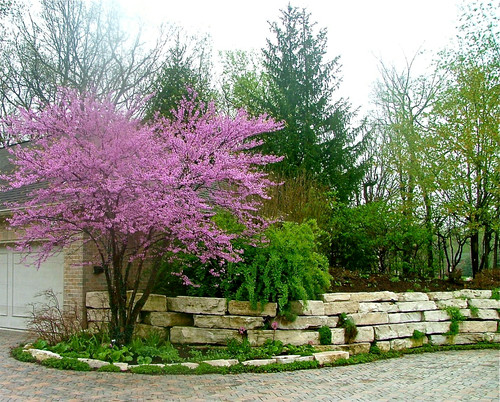San Diego Trees Guide: Best Types to Plant in Your Backyard

Whether you have a new house in a just-built development, want to spruce up your backyard, or have just moved and need more shade and privacy, planting trees usually comes to mind. Luckily, San Diego has an ideal climate for growing many types of trees and once you know what grows best where, you’re well on your way.
Keep in mind that like most things backyard, the type of tree you choose depends on your space, personal preference, budget and need, so below we’ve listed the trees that do well in our region with details such as how tall each species grows and their water requirements. You’ll find an option suitable for Rancho Santa Fe, Solana Beach, or Vista.
Overall, here in Southern California, drought-tolerant and bright-sun-favoring plants are your best choices, but still, most trees grow fastest when they are young and planted in nutrient-rich, well watered soil. Also, remember that you don’t want to plant a tree within 10 feet of your home due to growing roots and hanging branches, and that it’s important to size your tree according to the space you have in your yard. The main reason homeowners tear out trees is because they’ve grown too big and you don’t want to find yourself in that position years down the road.
Good Trees to Plant in San Diego
1. Shoestring Acacia –
This evergreen grows well in semi-arid climates and has low water needs once it’s established. The shoestring acacia blooms clusters of cream and yellow flowers primarily in the spring. Because the shoestring acacia tends to lightly “litter,” it’s recommended it not be planted too near pools.
- USDA hardiness zones: 8-11
- Mature height: 20′ to 40′.
- Width at maturity: 15′ to 25′
- Shape: tends to grow upright and can adopt a “weeping” form
- Growth rate: fast
- Prefers: full sun
- Leaves: long, thin, and green
- Best for: providing filtered shade; planting in a grove; screen planting, tight landscaping spaces, streets
- Maintenance: low
- Fire resistance: low
- Water requirements: low

2. Deodar Cedar –
Another evergreen, the deodar cedar is heat and drought-tolerant once it’s established. The deodar cedar is well adapted to San Diego’s climate and even grows well in mild seaside conditions. Sometimes called the “Christmas-tree tree,” the deodar is not as dense as the evergreen trees typically used for the holidays.
- USDA hardiness zones: 7-9
- Mature height: up to 80′
- Width at maturity: 20′ – 40′
- Shape: pyramidal (wider at bottom than top)
- Growth rate: medium
- Prefers: full sun to partial shade
- Leaves: dark green to gray-green evergreen needles
- Best for: ornamental planting; traditional landscapes, big spaces; for screening; streets in need of trees
- Maintenance: low
- Fire resistance: low
- Water requirements: low
3. Western Redbud –
This deciduous smaller tree blooms magenta flowers in the spring and is native to the western U.S. and is often found in the foothills and other dry regions. Drought-tolerant and fairly compact, the Western Rosebud is a fairly popular landscape tree in Southern California. And bonus? Its flowers are edible.
- USDA hardiness zones: 7-9
- Mature height: up to 20′
- Width at maturity: 15′
- Shape: shrub-like, multi-trunked rounded tree
- Growth rate: moderate
- Prefers: full sun
- Leaves: heart-shaped green, copper-tinged leaves in spring progressing to green and brown as the seasons progress
- Best for: smaller landscaping areas; ornamental plantings, hedges, along fences
- Maintenance: low
- Fire resistance: favorable
- Water requirements: low
4. Crape Myrtle –
Another deciduous small tree, the crape myrtle produces white, pink or purple blooms in late summer and is often referred to as the “lilac of the South.”
- USDA hardiness zones: 7-10
- Mature height: up to 25′
- Width at maturity: 15′
- Shape: shrub-like, multi-stemmed tree with dense branches
- Growth rate: moderate to fast
- Prefers: full sun
- Leaves: medium-green with colors that progress to yellow and orange in the fall
- Best for: smaller landscaping areas; ornamental plantings
- Maintenance: low
- Fire resistance: moderate
- Water requirements: low to medium

5. Angel’s Trumpet Tree –
Angel’s Trumpets are mainly characterized as large tropical shrubs capable of being pruned into a woody tree form, although other sources call it a small tree. The Angel’s Trumpet is so named for its enormous (up to 12 inches), tubular-shaped flowers that bloom prodigiously in the summer and fall. The flowers open at night and smell fantastic. Not for backyards with kids or pets, Angel’s Trumpet trees are highly toxic if ingested.
- USDA hardiness zones: 10-11
- Mature height: up to 6′ to 15′
- Width at maturity: 10-‘ to 15’
- Shape: vase-like with trumpet-shaped flowers
- Growth rate: fast
- Prefers: medium sun
- Leaves: medium-sized, green
- Best for: accent landscaping, borders, ornamental planting
- Maintenance: low
- Fire resistance: moderate
- Water requirements: medium

6. Lemon Bottlebrush –
An evergreen tree (commonly grown as a shrub), Lemon Bottlebrush sports red, brush-shaped flowers and is fairly drought-tolerant.
- USDA hardiness zones: 9-11
- Mature height: up to 25′
- Width at maturity: up to 25′
- Shape: oval and rounded at top
- Growth rate: moderate to fast
- Prefers: full to medium sun
- Leaves: bright green, fairly slender
- Best for: hedging, screening, shade
- Maintenance: medium
- Fire resistance: favorable
- Water requirements: low
7. Royal Purple Smoke Tree
This is a deciduous tree with dramatic, pink-purple seed clusters and reddish foliage that reaches its peak in the summer and becomes scarlet in the fall. The tree’s blooms often appear wispy or “smoky,” which gave rise to the name.
- USDA hardiness zones: 5-9
- Mature height: 15′ to 20′
- Width at maturity: up to 12′ to 15′
- Shape: round, small
- Growth rate: slow
- Prefers: full to medium sun
- Leaves: oval, purple-red
- Best for: borders, deck/patio decoration, specimen tree
- Maintenance: low
- Fire resistance: moderate
- Water requirements: medium
8. Sweet Shade Tree
Native to Australia, this evergreen tree sprouts sweet-smelling flowers in the spring and early summer that bloom a pale yellow and mellow to a deep yellow.
- USDA hardiness zones: 4-8
- Mature height: up to 40′
- Width at maturity: up 15′ to 20′
- Shape: tall and slender
- Growth rate: slow
- Prefers: full sun to slight shade
- Leaves: yellow-green to bright green shiny oval clusters
- Best for: smaller landscaped spaces, patio areas, and lawns
- Maintenance: moderate
- Fire resistance: favorable
- Water requirements: low
Looking for Fruit Trees?
San Diego provides the perfect climate for growing fruit trees with its direct sunlight and warm seasons. We didn’t cover fruit trees here because they tend to require more maintenance and attention than simple trees used for landscaping do. However, a comprehensive guide to what fruit trees to plant in San Diego is available here.
Your Turn…
With its microclimates and varied topography, Southern California and San Diego in particular, are well suited to growing many different tree types. After evaluating your space, needs, and function versus form requirements, and doing a little research, choosing the best species for your yard is easy. What trees do you grow? Are they right for your landscape?
Photo Credit: Where not noted as Houzz, pictures are from http://commons.wikimedia.org/wiki/File:Cedrus.JPG,
http://commons.wikimedia.org/wiki/File:Brugmansia_candida_tree.jpg,
http://commons.wikimedia.org/wiki/File:Callistemon_citrinus_Red_Clusters_2.jpg



